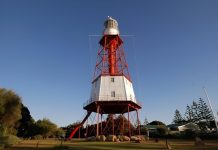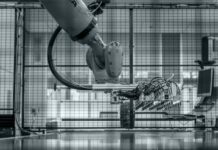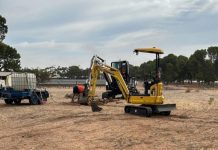
Sparc Technologies has announced that construction of its first-of-its-kind photocatalytic water splitting (PWS) pilot plant at the University of Adelaide’s Roseworthy Campus is on schedule and within budget, with commissioning expected to commence in July 2025.
The announcement was made during an opening ceremony held on Tuesday, 24 June, attended by key stakeholders including representatives from Sparc Hydrogen joint venture partners, the South Australian Government, and Japan’s Shinshu University.
“The plant represents a first-of-its-kind demonstration and R&D facility globally for photocatalytic water splitting and is a key step towards commercialisation of the technology,” said Sparc Technologies Managing Director Nick O’Loughlin.
“In an environment where major challenges exist for hydrogen projects due to the high cost of power, the requirement for new solutions to unlock low-cost green hydrogen without relying on electrolysers has never been higher.”
Sparc Hydrogen is a joint venture between Sparc Technologies, Fortescue Ltd, and the University of Adelaide. The consortium has been developing the PWS reactor technology since 2022.
Unlike traditional electrolysis, Sparc’s PWS process uses sunlight and advanced photocatalyst materials to split water, significantly reducing the electricity needed for hydrogen production.
Construction began in March 2025, with civil works completed by early May. Four linear Fresnel (LFR) concentrated solar modules – delivered from Spain – have since been installed, with remaining equipment and tie-ins expected to be completed by early July. Reactor installation and commissioning are scheduled to begin later that month.
Professor Anton Middelberg, Deputy Vice-Chancellor (Research) at the University of Adelaide, said the project reflects how academic institutions and industry can collaborate to bring innovative research into practice.
“Sparc Hydrogen demonstrates how the University of Adelaide is working with industry partners to develop new pathways for the translation of world-class research conducted here in South Australia. This project aims to respond to one of the great challenges of our times: the development of green energy solutions for a sustainable future for society,” he said.
The Roseworthy pilot plant is designed to support further research and development, allowing on-sun testing of different reactor designs and photocatalyst materials.
It also aims to validate laboratory test results under real-world conditions, verify technical modelling, and inform scale-up engineering for commercial deployment.
Michael Dolan, Director of R&D at Fortescue Ltd, said, “At Fortescue, we are investing in a suite of technologies that can accelerate decarbonisation at an industrial scale. The Sparc Hydrogen pilot plant demonstrates the power of partnership in pushing the boundaries of green hydrogen innovation. Photocatalytic water splitting has long held promise and this project is a step toward unlocking its commercial potential.”
Sparc Hydrogen said it is not aware of any other facilities globally that allow for real-world testing of PWS under concentrated solar conditions.















